Kartikeya Sarabhai (KS), Founder and Director of the Centre for Environmental Education (CEE), is one of the world’s leading environmental educators. A Padma Shri awardee, Mr Sarabhai has served on several committees of the Ministry of Environment and Forests and the Ministry of Human Resource Development, of the Government of India as well. A pioneer in the field, Mr Sarabhai has been at the helm of improving our understanding of the environment and our intimate connection to it. Today, The Bastion’s Sourya Reddy (SR) sits down with Mr Sarabhai to talk about India on the path of sustainable development.
SR: You’ve been a leader in Environmental Education (EE) since the 1980s. What has your vision of EE been?
KS: Let me take you back a bit. When we (CEE) started, we were on a campus outside Ahmedabad that was totally barren; it had no trees or much of greenery on it. Understanding that this was where cows would come to pasture, we made an understanding with the local communities and asked them to help us make the area greener. And suddenly, with their cooperation, we saw this whole forest come up. From then on, we got interested in social forestry, with large tracts of land becoming green due to people’s active participation, especially in North Gujarat.
This is also when we saw the impact that education and knowledge could have. Here, education is not just in the formal sense but includes skill-building, capacity building, open and easy access to knowledge and more. We were discussing with the then secretary-designate of Environment (at the time, in the early ‘80s, there was no ministry of environment; till 1984, it was a department under the Ministry of Science and Technology) that India would not be able to soundly transform, unless there was education to go with policy changes, incentives, technical help and more. Unless the people themselves are aware, any plan of action would be ineffective.
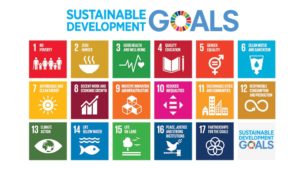
The vision was and continues to be that the average citizen of India should know enough about sustainability and their connection to their environment. It also called for recognizing that Indian philosophy and practices have always been intimately connected to concepts of sustainability. For example, in Gujarat, a roti saved at night becomes a khakhra the next morning. In Kashmir, people build cow sheds under their living room so that the heat can be captured and keep the house warm. In Orissa, leftover rice during dinner becomes a breakfast porridge. One can find many more such examples all over the country. This is natural to us; we are a wastage avoiding country. But modernization and modern education were rapidly eroding those values. We felt that while it was necessary to learn from the best in the world, it was also necessary to learn from our own roots.
In 1984, I was called to the North American association to give a talk on EE. When they asked me how I would design these programs, I said that I will take my inspiration from a saree. A Patola saree, for instance, takes 2 years to design and make, but it doesn’t come with a prescription; every woman can wear it in her own way. Similarly, my education programs should be such that they are a tool in the hands of a teacher, that can be moulded as required. So if I’m teaching water conservation in Dal Lake, or in Jaisalmer or in Kerala, I should be able to use in ways that most enhance my teaching.
So the vision was always that development in India should be what we now call sustainable. We should be leapfrogging other countries, and not follow and imitate. And our education should prepare people to not only be sensitive but to be innovative and encourage people to do new things.
SR: What are some challenges that we face today, in terms of imparting EE?
KS: One very obvious challenge is that teachers need to be trained, and because there are thousands and thousands of teachers, there is huge inertia in the system.
The second problem is more structural; it has to do with the way in which marks are awarded. Suppose I say that there are these two themes that you have to study for, but one does not carry weightage while the second does. I can more or less be sure that you are likely to learn about the latter and not the former because that’s the way the system is designed. This is a problem because it is based on a clear demarcation of what is right and wrong. Often, environment answers are not so black and white but are right or wrong depending on the assumptions that the question is built on. In a competitive educational setting, how do you address this?

To answer this, let me deviate a little. For example, today’s newspaper talks about some man who beat up his wife because she could not give him a daughter. But anybody who has studied basic biology knows that the sex of the child is entirely dependent on the father. If this much education could be imbibed in every Indian student, incidents like this could probably be avoided. In a conversation with NCERT, we spoke about creating 5 or 6 such questions, which are already “leaked”. We tell everyone the question — is the sex of the child determined by the father or the mother? If everybody knows this is coming, then every child is bound to learn it, and you at least have a chance of building this knowledge. The same goes for issues of the environment. So the educational limitation of people wanting to just pass exams can be used to some advantage.
The third problem is the lack of interdisciplinary learning in the system. We at CEE do a lot of activity based work, and now we’re trying to get young people in schools and colleges as part of the SDG Handprint Lab; here, every school or college selects one area (some villages, a block or whatever they are comfortable with) and creates projects and takes action in this area in relation to the SDGs. This is aimed at building knowledge from across subject streams. Currently, to pass, I need to have absolute clarity of what is right and wrong, which is there across subjects. Matters of the environment, and indeed life as such is not like that; what is right in Place A is not right in Place B. It is highly contextual, and this understanding is not yet part of the education system.
SR: You’ve spoken extensively about the need to stop looking at the environment and development as two opposing forces. Could you shed some more light on this?
KS: I’ll give you an example. A while back, I was on the Gujarat committee that was approving industries and new businesses. So one big industry came to us, and said, “we are putting up this new industry, and we are not going to pollute, nor cut trees. Plus, there is no wildlife to disturb, so give us permission to set up the factory”. However, we showed them that the amount of water they were going to use would result in the drying up of water sources of 80 villages around the factory.
But we didn’t go about this in a confrontational manner. Instead, we asked them to use their expertise and come back to us with a solution that could tackle this issue. In three months or so, they came back with a solution that involved recycling 95% of the water used in the factory. They also gave us an assurance that if in any of those 80 villages water dried up, they would see that their wells are dug deeper.
Obviously, the cost for the industry went up during recycling. They had to process the water, then do reverse osmosis, and finally, 20% of the water came out as slurry. At the slurry stage, you have to evaporate the water and keep the salts, and all of this was becoming prohibitive. So although they said yes and were doing it, how could they actually compete?
They themselves took the first step and invested more R&D to look into this, which yielded great returns. First, they tremendously reduced the cost of evaporation. Second, they found that the slurry was essentially sulphates, and those sulphates were required in their factory; they needed some 52 tons of sulphates, which now was produced as a byproduct of this slurry! They were so successful and received so much praise, that they formed a company to advise others on how to do it.
This is just a story about how the ideal case should be. I mean, we could just say “sorry, cancel this, you’re not allowed” and move on. Instead, by working it out, we produced results that helped everybody. Given that they are also part of the same system, we should adopt a more responsible and inclusive discourse. Obviously, companies that don’t comply with rules will have cheaper products than the companies that do comply; this is where the government needs to step in and make sure everybody is on the same playing field.
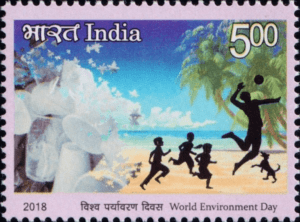
There are other ways to make use of this co-existence as well; we are currently working on a program where CSR comes in the form of expertise, as opposed to just money. Through this, we can use the best of what the corporate world has to offer, to solve everyday problems. The earlier school of thought was very much that ‘ye environment waale aayenge toh kaam bandh kara denge (if these environment people come, they’ll shut down our work), these guys are anti-industry’ etc. But now, everybody has come to realize this intimacy between development and the environment, which is why it is foolish to talk about them as separate, opposing entities anymore.
SR: Over the years, you have seen and worked with several governments in power. How do you think the Indian state has come to use and understand the concept of sustainable development?
KS: In the ‘70s, there was a lot of interest in the environment. During the first major conference that the UN had organized in 1972, out of all the leaders that Sweden invited, only the Indian Prime Minister, Mrs Indira Gandhi, went. At that time she had made the connection that you cannot solve developmental issues without taking care of the environment, and you can’t take care of the environment without development. She also raised an important question — now that we know that we can’t recklessly build countries, how do we develop rapidly?
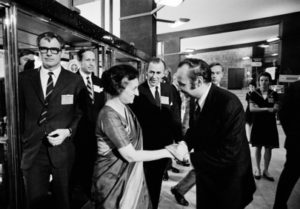
This question remains true even today. I have found that while governments change at every level, our system is still, and unfortunately so, very dependent on individuals. For instance, in the same political party, one minister will be extremely keen on working, but another will not follow through. One IAS officer will be extremely bright and hands-on and the next one is not; most of these people’s lives are 3 or 4 years at best.
Some of the projects that need to be done can only be fulfilled in the long term. So if I say let’s plant a mango tree today, then obviously during one term as Minister, he/she is not going to see the fruit. This understanding has been somewhat absent for a lot of things; they want changes and improvements overnight. Issues of sustainable development and the environment take time and thus demand to remain outside the political agenda.
You know, there used to be something known an MP’s forum, across states and parties, which was an environment forum. But then it died out. And now, things are so polarised, that its difficult to see how something like this, across the aisle kind of development, can happen. But this inaction, for the lack of a better word, isn’t always because of ignorance. There is always pressure from interest groups, and I guess here is where a government needs to step up.
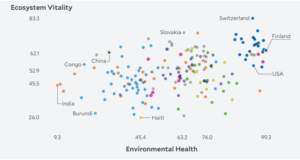
I also think some forums should be institutionalized; like a forum on the environment in every assembly, and proper public consultations are extremely important. Some of these are already laws, but people are openly flouting them. By and large, the government has understood the need for sustainable development, but again, the action is entirely dependent on an individual. The government must ensure that EE is designed such that the public at large is knowledgeable and willing to take action.
SR: How far do you think we have come to realize your vision of the impact of Environmental Education? Has the average Indian become more aware?
KS: It’s difficult to put it in exact numbers, but to a large extent, today, the word pariyavaran or environment is widely known. Earlier if you saw smoke, you wouldn’t think of pollution. If you saw a barren hill, you wouldn’t think of deforestation. But today, this is how you and I see these things. This is how lots of young people are seeing them. I think these words, like recycling, sustainability, pollution and more have become words we use every day. The language that only a few of us were speaking back then, is now being spoken by so many people. So I think there has definitely been a huge rise in awareness.
Till the ‘90s, EE was not compulsory as a subject in schools. But in MC Mehta’s case against the Union of India in the early ‘90s, he argued that the constitution required the state to protect the environment. If there was no teaching about it, how can it be protected? After this, the Supreme Court ordered that EE had to be part of every formal education program from class one to graduation. And this definitely helped; we at CEE ourselves have analysed every book and built on opportunities where we can introduce material.
But people everywhere are now becoming conscious. For example, we work with a number of farmers. Now, although the word organic is used differently everywhere, farmers are conscious that some of these pesticides used are not davai as it’s called but are actually poison. We have seen that for himself, a farmer will have a small plot where he is growing crops using no pesticides.
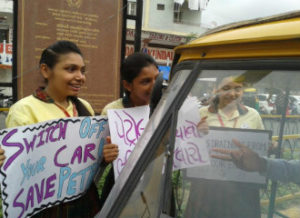
The first generation of students who went through this EE is now in positions of power and in decision making roles. I hope that these people will make decisions keeping some of this in mind. Now to what extent one can change some decisions is difficult, because, as I mentioned, there are several other interests that are present.
This is also a big opportunity for India; the path to development that the West took had come about before people were conscious of the impact of their actions on the environment. They now know that it isn’t sustainable, and so they are taking a number of corrective measures. For instance, they are trying to retrofit much of their cities, which is an extremely difficult thing to do. India in that sense has an opportunity. We are conscious and have seen all these opportunities and models around the world. If we can pick and choose the right ones, from the best of abroad and at home, we could do something quite transformational and remarkable.
Views expressed are personal.






